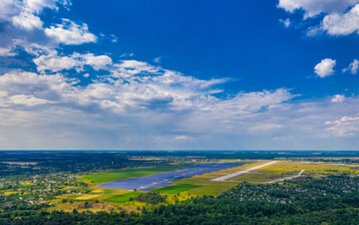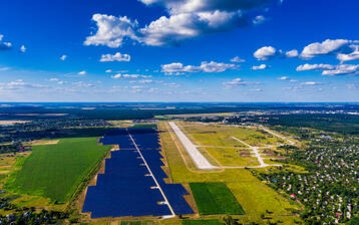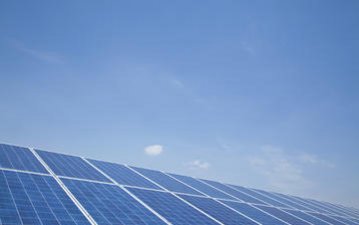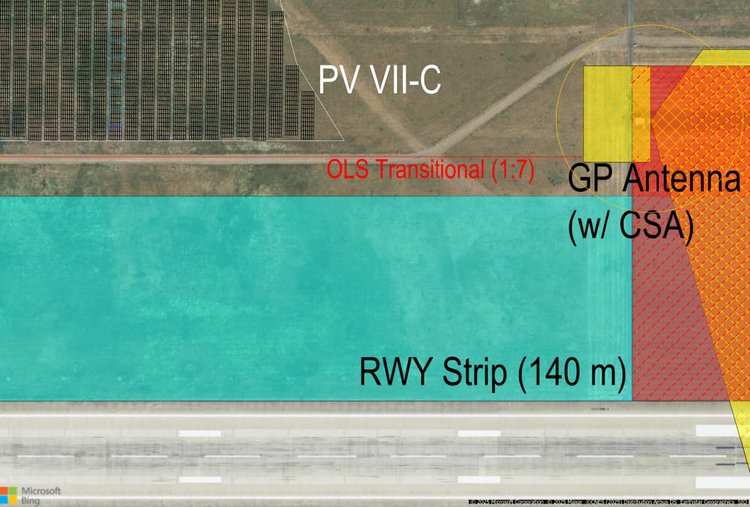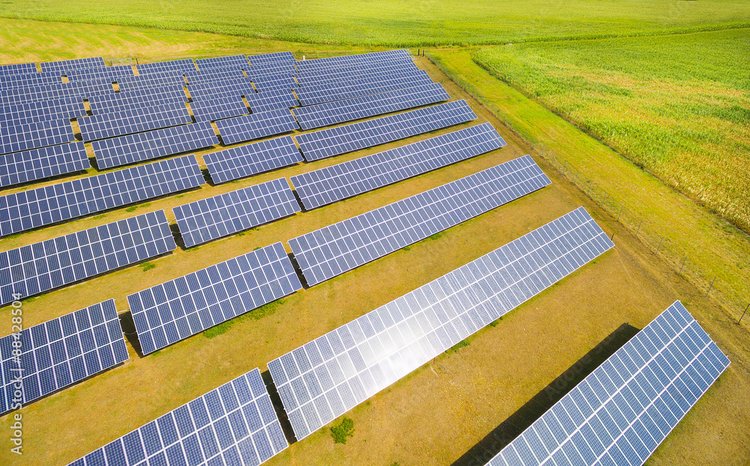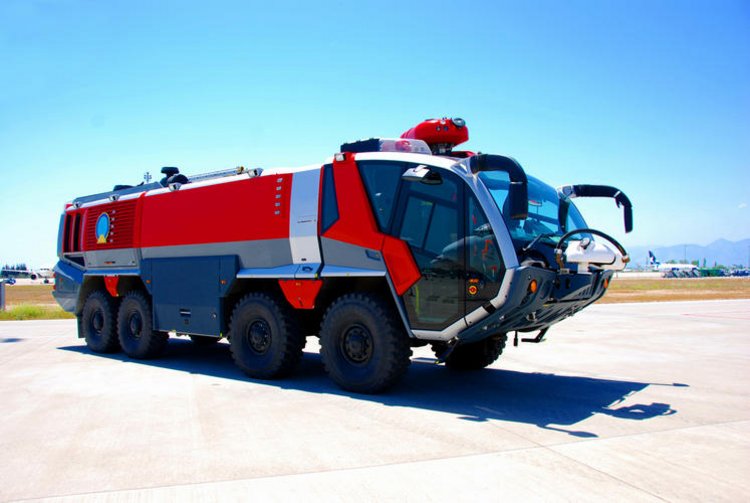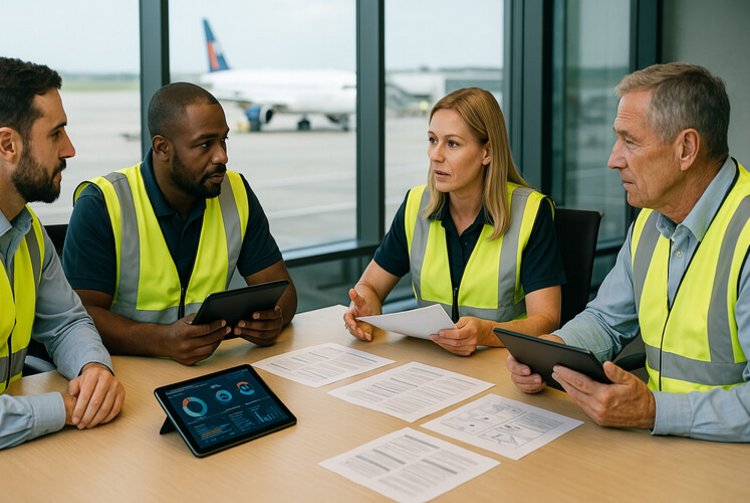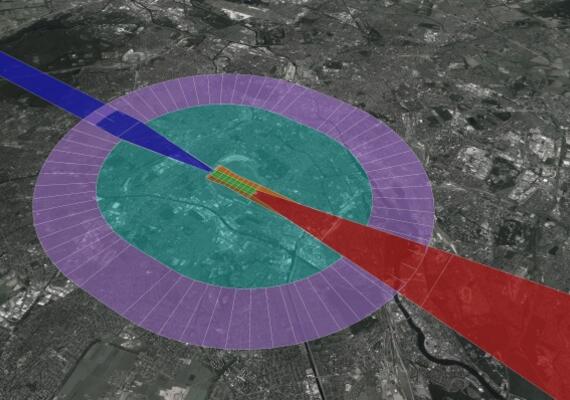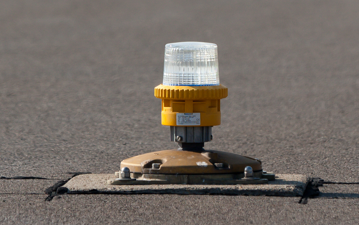Solar PV Systems at Airports
Through various projects, airsight has supported airports and photovoltaic project developers worldwide in evaluating the potential of open space near aircraft movement areas and on terminal/airport building roofs for photovoltaic (PV) systems.
Our services include glint & glare assessments, area filtering, CNS impact assessments, ICAO/EASA compliance checks and comprehensive risk assessments and safety cases. In addition, we work with partners on comprehensive technical and commercial solar PV studies to support approval and implementation planning of solar systems, expanding the study scope to include biodiversity analyses, environmental impact assessments, and climate resilience assessments (e.g. flood risk modelling).
These assessments and evaluations determine the design criteria and requirements for future PV systems and must considered in the PV system design planning and subsequent cost-benefit analysis. Finally, they must also be taken into account for approval by the competent authority.
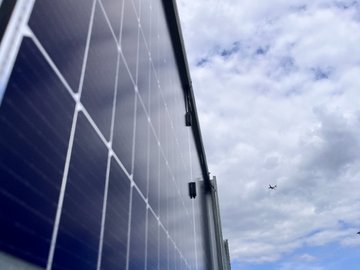
Do you have a PV project that you'd like to discuss with us?
Send us a message, our experts will review your request and get back to you very soon!
Glint & Glare Assessments
Assessing the impact of planned solar PV systems on ATC and approaching aircraft as well as reducing reflecions effects through optimization of PV panel tilt, orientation, and reflectivity requirements.
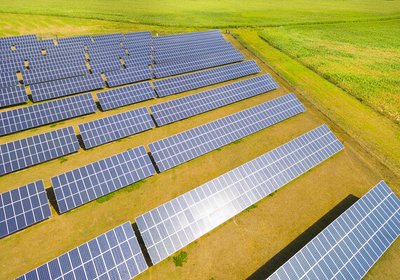
We investigate planned PV systems on roof surfaces, in open spaces close to taxiways or runways, vertical walls, and as floating PV on bodies of water. Our team analyzes the potential glare effects on approaching aircraft, helicopters, air traffic control (ATC), and ground traffic.
Recent glare incidents demonstrate that visual reflections from PV systems can significantly disrupt airport operations. Ultimately, it is clear that light reflections from PV systems must not compromise airport safety. At airsight, we are the experts when it comes to designing PV systems in such a way that negative reflections are avoided by adjusting the orientation and tilt angle as well as the panel material.
When assessing the resulting glint and glare, we take into account not only the occurrence and duration of the reflections depending on the time of day and season, but also the luminance (expressed in cd/m²) and any shading of the reflections by airport buildings.
Our evaluation and assessment methodology is based on FAA guidelines and has been coordinated and optimized during many projects with civil aviation authorities. However, where applicable, we also apply national regulations (e.g. Switzerland, in LAI in Germany). Because the safety of avation must remain paramount, our assessment approach is as follows: Reflection intensities on aircraft approach paths must be reduced to a minimum ("green glare"), and all reflections (regardless of intensity) are prohibited for air traffic control operator (ATCO) in the ATC tower and cameras on remote towers.
- Detailed description of the project, including coordinates and roof heights (if necessary)
- Possible preliminary specifications of the planned PV systems (number of module rows, preferred orientation/tilt angle, module type)
- Description of observation points (e.g. ATC, cameras) and approach trajectories (including helicopters)
- Consideration of ground traffic
Typically, each glint & glare assessment can be devided in two project phases:
- Phase I: Based on the client's input data and the aviation-specific information available to us (e.g., AIP), we work closely with the client to create a preliminary glare analysis and identify possible orientations/tilt angles that meet FAA requirements and, if necessary, make a go/no-go decision for the implementation of the PV systems.
- Phase II: Preparation of the actual glint & glare assessment report with a detailed evaluation of the resulting reflections. The report is suitable for submission to the competent authority.
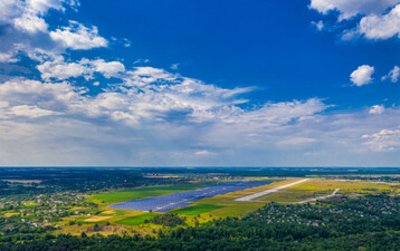
airsight conducts aeronautical studies for solar PV systems near aircraft movement areas following a five-step approach. Our aim is to maximize the installed capacity of the PV system at the airport, while maintaining high safety levels at airports. For hazards posed by solar panels near aircraft movement areas, a multi-level analysis and risk assessment framework is mandatory to ensure that only acceptable risks exist for airport operations.
In addition to ensuring compliance with regulatory requirements (ICAO, EASA, and national), we carry out comprehensive glint and glare assessments and impact assessments on CNS equipment. We also take operational concerns, such as RFFS and emergency procedures, into account when defining aeronautical requirements for PV design.
Technical and Commercial Viability Studies
Detailed technical planning of solar PV systems upon implementation level including cost-benefit analysis
Thanks to our extensive network of independent renewable energy consultants and PV planning experts, we are the central point of contact for all questions relating to the implementation of PV solar systems at airports and around – from aeronautical reports and detailed technical PV planning to cost-benefit and business case studies and the approval and implementation planning of PV systems.
We centrally organize and manage the planning, analyses and evaluations required for approval and implementation planning of solar PV systems. Ultimately, this saves our clients valuable resources and budgets, as the necessary coordination with stakeholders and project planning are managed and monitored by airsight's PV experts.
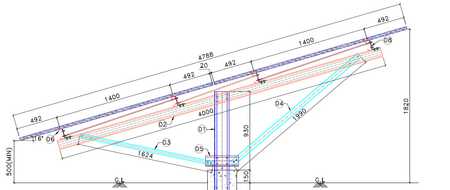
Together with our partners, we take on the detailed technical design for solar PV systems. This includes i.a.
• General design of solar PV systems (i.a. PV layout design) adhering to requirements from aeronautical studies, environmental and biodiversity impact assessments and climate-resilience related adapation measures.
• Design of electrical transmission setup
• Design of battery energy storage systems (BESS)
• Design of maintenance regime
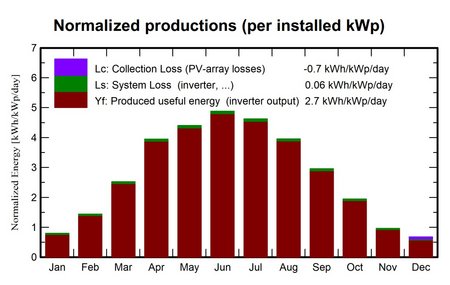
We are conducting comprehensive analyses of the lifecycle cost-benefit of solar PV areas, taking also into account several degradation factors. The total cost of installed capacity is divided into its component parts: solar panels, mounting structures, electrical components, cabling, infrastructure, and energy storage systems, if applicable. To provide a meaningful context, calculated lifecycle cost rates and upfront costs are benchmarked against market rates for comparable systems. Other indicators such as CAPEX/OPEX and LCOE are also taken into account in the overall analysis.
The CBA aims to deliver clear insights into the economic viability of the planned solar PV systems and to inform stakeholders about the feasibility of implementation and to guide recommendations for further action.
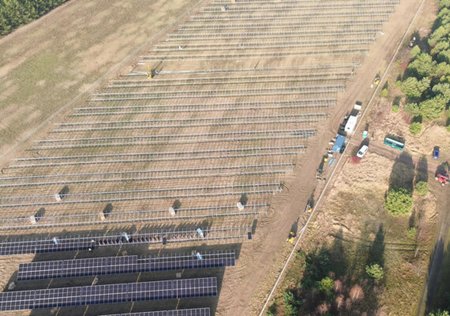
We develop implementation plans for PV systems in which we define criteria for prioritizing their use in airport areas. This includes:
• Planning of PV pilot systems and trials to investigate system performance under real conditions
• Planning the construction site while flight operations continue, ensuring compliance with regulatory requirements
• Access control concept
• Consideration of preparatory measures, such as mowing plan, ordnance clearance
• Support in the approval process with the competent authority
• Training and management of maintenance activities associated with the PV systems
• Involvement of stakeholders
How we work
Detailed knowledge of national and international regulations, industry best-practices through many years of experiences in PV-related projects
Dedicated and highly qualified team of experts with vast references on glint & glare and CNS impact assessments, aviation regulatory requirements, and risk assessments
Worldwide experience in dealing with manifold aviation stakeholders confronted with implementing renewable energy at airports
ISO9001:2015 certified Quality Management System to ensure maximum client satisfaction and efficient standardised work processes.

